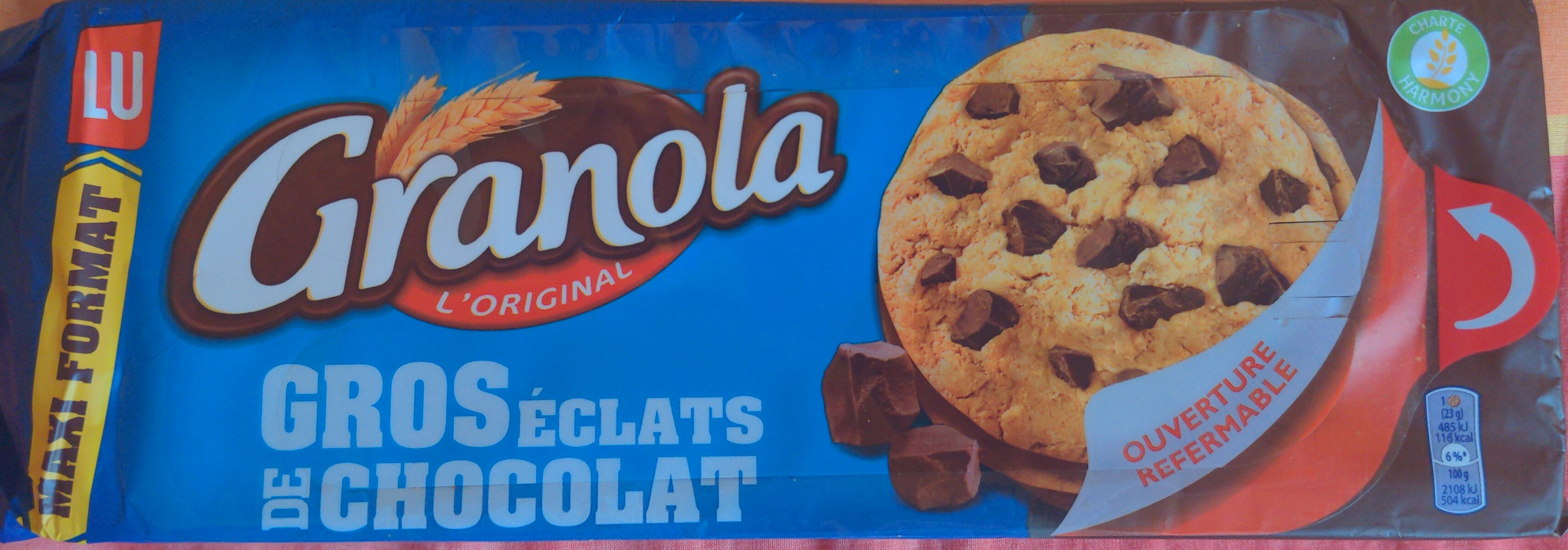Granola L'original - LU - 276 g
This product page is not complete. You can help to complete it by editing it and adding more data from the photos we have, or by taking more photos using the app for Android or iPhone/iPad. Thank you!
×
Barcode: 7622300689124 (EAN / EAN-13)
Quantity: 276 g
Packaging: Barquette en plastique, fr:Barquette PET à jeter, fr:Film plastique à jeter
Categories: Snacks, Sweet snacks, Biscuits and cakes, Biscuits, Chocolate biscuits, Drop cookies, Chocolate chip cookies
Labels, certifications, awards:
Triman
Stores: Magasins U, Cora, Auchan, E.Leclerc, carrefour.fr
Countries where sold: France, Switzerland
Matching with your preferences
Report a problem
Data sources
Product added on by kiliweb
Last edit of product page on by alpha-lin.
Product page also edited by aleene, alsy, armelle, beautifulldrey, beniben, date-limite-app, driveoff, ecoscore-impact-estimator, fabe56, foodrepo, gibro, gmlaa, inf, jammy-begood, julie-yuka, julienpelletier79, larzilliere, magasins-u, magma, miles67off, moipaslui, moon-rabbit, off.6c38ac24c97e1a1e846132eda4db88c, openfoodfacts-contributors, packbot, pepapipi64, quechoisir, quentinbrd, stephane, tacite, tacite-mass-editor, the-fullymasked-etc, thierryp, widowild, win100, yuka.R0pnNkZwZ2Z2c0VnaXNJVTh3ejNwNEp2NXNPVVRHV0pFYlpQSUE9PQ, yuka.V2ZnQkVmNERqL1ZTZ1AwRjJ4enordUlwOTVpNVUyaTNCTTFNSUE9PQ, yuka.VFk4NkVwbGRnLzFRd2M4QTF6K1B5dmtzNnByM1kwMkhkTzh3SUE9PQ, yuka.VFlFbFR2cGJsNmNtcWZBczV6REw5c2xOMnFHS1RFYWVLUFl1SVE9PQ, yuka.VnBFOEc3c3NqY2d3a3NZNm9pSDExODlNNXJhUUJHanJLY2tVSVE9PQ, yuka.WExvbEM3aFkrL0Fnc013ZDFRL285c0FxeGJLbUExcVhKdTQ4SUE9PQ, yuka.YVlNRVQ0ZFpuYWtSaXNZT3J4bngvWW9vd29DeldIS2RLUFFMSVE9PQ, yuka.YmFFNUFMVmVsT2RYd3NNRG9nM0pvZGd1NDY2VllFRzhMTElUSVE9PQ, yuka.ZDdzK1A1b1I5L2NvaE5zNTBRN2F4SU5ON3BpSFpHbXZGTm9iSVE9PQ, yuka.ZWFwZUFxSmN0cUlJaDhVVnowLzArYzlNMmJDMVZtbUxjdTRESWc9PQ, yuka.ZXFJaUlJOEhxY1lwZ2N3RjFVK0Yyc3h1MzRYemNFSzRGZTBzSVE9PQ, yuka.ZmJ3bElidyt0Tnd3cWNBQnd4RFp5dEJ4eWM2cFZIaVFlOGN6SVE9PQ, yuka.sY2b0xO6T85zoF3NwEKvlmUaaejSn236EULkoFSGyd2vdbGzO-9szIjiIqg.












